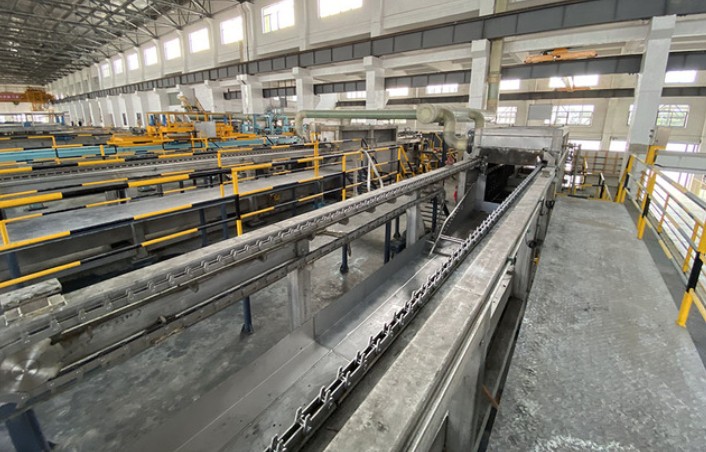NEWS&EVENTS
Home > News&Events > Company news > In the process of electrolytic purification of antimony ore, which links have the greatest impact on energy consumption?
In the process of electrolytic purification of antimony ore, the electrolytic cell design, current efficiency, electrolyte circulation and other links have a significant impact on energy consumption, among which the impact of current efficiency and electrolytic cell design is particularly critical.
1. Current efficiency
The current efficiency directly reflects the efficiency of converting electrical energy into target metal deposition. When the current efficiency is low, it means that a large amount of electrical energy is used for side reactions or dissipated in the form of heat energy, resulting in increased energy consumption. For example: when the current efficiency drops from 90% to 80%, the energy consumption will increase by about 11% at the same output. Energy consumption can be reduced by optimizing the current efficiency by selecting suitable electrode materials, controlling the electrolyte composition, and accurately adjusting the current density.
2. Electrolytic cell design
The structure, electrode spacing, and material of the electrolytic cell will affect the resistance and mass transfer efficiency during the electrolysis process. The cell voltage can be reduced and the power consumption can be reduced by adopting a new diaphragm electrolytic cell; the electrode spacing and shape can be optimized, the electrolyte flow can be improved, and the concentration polarization can be reduced, thereby improving the current efficiency.

3. Electrolyte circulation
The impact of electrolyte circulation on energy consumption is mainly reflected in mass transfer efficiency and temperature control. Appropriate electrolyte circulation can accelerate ion migration, reduce concentration polarization, and improve current efficiency. However, too high a circulation speed will increase pumping energy consumption, while too low a circulation speed may lead to insufficient mass transfer. Therefore, it is necessary to optimize the circulation speed and method according to the scale of the electrolytic cell and process requirements to balance mass transfer efficiency and energy consumption. In addition, the control of electrolyte temperature is also crucial. Too high or too low temperature will affect current efficiency and energy consumption.
In summary, in the process of electrolytic purification of antimony ore, in order to achieve effective reduction of energy consumption, it is necessary to comprehensively consider multiple factors such as current efficiency, electrolytic cell design, and electrolyte circulation. Only by continuously optimizing these key links can the overall performance of the antimony electrolytic cell be improved and the goal of efficient and energy-saving electrolytic purification be achieved.